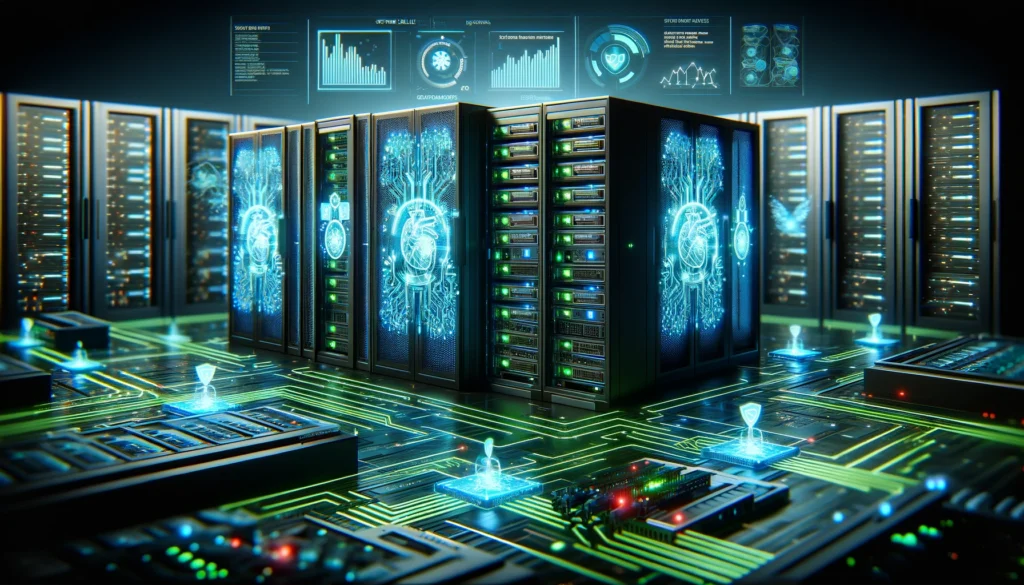IT Resilience Through Self-Healing Technologies

By Geoff Hixon, VP, Solutions Engineering

Your quarterly report is due in less than an hour. You’re doing fine until your screen suddenly freezes—but before you can even look up the phone number to IT, you see a notification on your second monitor:
Warning: potential memory module failure. Solution: Processes were reallocated to healthy sectors, and a maintenance ticket has been created for a repair during your scheduled lunchtime tomorrow.
Your primary screen flickers back to life, and there’s your report, exactly as you left it. A small system tray icon indicates your computer is in a protected recovery mode—slightly slower, but completely functional. You submit the report and, as promised, an IT technician arrives the next day to complete the repair.
This type of occurrence is now a reality thanks to AI, which is expected to hit a market volume of $826.70 billion by 2030 and is poised to revolutionize the user experience and IT workflow.
What Is a Self-Healing PC?
While traditional computers simply stop working when there’s an issue, self-healing PCs are designed to detect, diagnose, and automatically resolve hardware and software problems (at least temporarily) without human input. These proactive systems rely on sensors to monitor performance, diagnostic AI to analyze sensor data, and automated recovery mechanisms to enable repairs. By identifying and addressing potential problems before they impact user productivity, self-healing PCs extend hardware life and minimize downtime and emergency IT support tickets.
The incredible impact of Self-Healing PCs
Higher workforce efficiency. Greater system resilience. Dramatic reductions in help desk calls. These are just a few of the benefits of self-healing technologies—thanks to new sensor technology, automations, and increased adoption of AI. Consider the widespread impact of the CrowdStrike outage in July 2024, causing system failures for Windows machines worldwide. A self-healing PC could have automatically detected the system instability after the problematic update and rolled back to the previous stable configuration without human intervention.
Self-healing systems are one reason why PwC projects that AI could contribute up to $15.7 trillion to the global economy by 2030, largely due to gains in employee productivity. Here are a few examples of how these systems operate:
- Battery health for laptops: Sensors predict end-of-life, order replacement batteries when needed, and automatically adjust charging parameters to extend lifespan.
- Memory integrity: The system scans for memory errors, flags compromised modules, and automatically shifts processes to healthy memory regions.
- Network connectivity: If connectivity degrades, the system automatically switches from ethernet to WiFi (or vice versa). AI can also analyze connection patterns to identify the best times for background updates.
- Security anomaly detection: Sensors identify unusual patterns or resource usage—potential signs of malware—triggering isolation of suspicious processes and deeper scans.
- Software optimization: Machine learning highlights applications causing slowdowns and shifts resource-intensive tasks to lower-usage periods.
- Storage health monitoring: Sensors track read/write errors, bad sectors, and other metrics, automatically reallocating and cloning critical data if failure is imminent.
- Thermal management: When components are overheating, sensors temporarily adjust fan speeds or throttle performance—and schedule maintenance if patterns suggest a cooling system failure.
Self-healing PCs are like having an IT person scanning every machine and looking over every user’s shoulder 24/7, ready to jump in immediately at the first sign of trouble and provide a quick fix until a complete repair can be scheduled. Employees often don’t even know something’s wrong until they see a notification that it’s already been resolved—all thanks to sensors, data, and AI.
Advanced Endpoint Monitoring: The Key to Self-Healing
Self-healing PCs require advanced sensor technology to collect comprehensive, real-time telemetry data from endpoints. This endpoint monitoring is crucial because it allows you to have continuous visibility into the health of your devices.
Once you have the data, advanced AI and ML (machine learning) can analyze massive datasets, looking for patterns, anomalies, and potential issues that may require proactive interventions. Leading AI platforms can rapidly evaluate performance data, accurately predict system failures, and deploy pre-built automations.
The result is a system that resolves issues with limited human interaction, reducing the workload for IT support and improving the overall digital employee experience (DEX). With fewer disruptions and less need for manual troubleshooting, your IT team can transition from a reactive unit to a proactive resource.
Freeing IT to Focus on Strategy and Value-Added Initiatives
Your IT team should be spending their time on strategic initiatives that significantly impact your organization—and your bottom line. That’s the benefit of self-healing PCs—they let your IT team focus on transformational projects, optimizing system performance, and finding new ways to use technology to improve productivity and workplace satisfaction. By enabling predictive analytics and AI-driven automations to monitor devices and resolve issues, IT teams move from a reactive “break-fix” model to a proactive, data-driven approach.
Consider a multinational financial services company dealing with costly device failures, hundreds of hours of employee downtime, and a significant burden on the IT team. Investing in new devices may help initially, but that investment isn’t fully maximized unless the firm deploys AI-driven endpoint monitoring. Once they do, within six months they can see that IT service requests and average downtime per employee have dropped, resulting in significant annual productivity gains, better uptime, and fewer helpdesk tickets. But this isn’t just a short-term fix; with continuous monitoring and automated AI-powered fixes, the company can realize these benefits for years.
This is simply one example of how AI and endpoint monitoring can improve enterprise-wide productivity, help future-proof your digital infrastructure, and provide a competitive advantage. From workstations to POS systems, PCs, and kiosks, integrating AI is the key to transitioning from reactive to proactive IT.